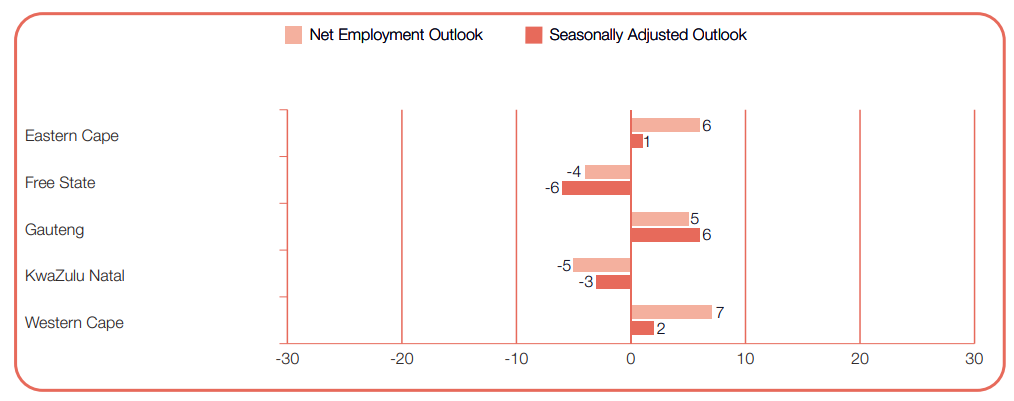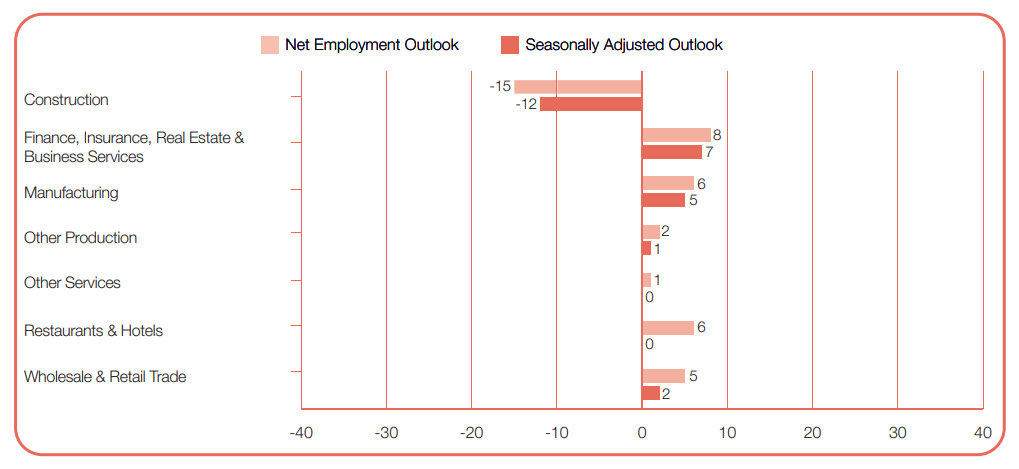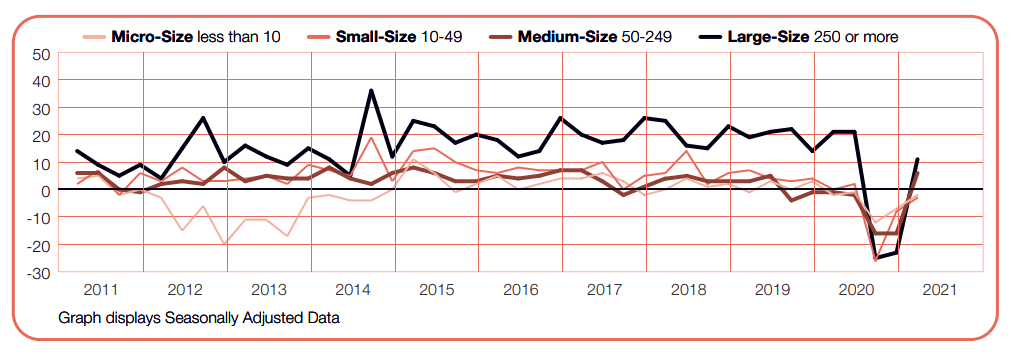South African companies improved drastically for the better change of economical status

According to the latest ManpowerGroup Employment Outlook Survey, South African employers are expected to approach hiring with caution in the first quarter of 2021. While there will be some hiring activity, with about 11% of employers anticipating an increase in payrolls, the majority of companies, 76%, plan to maintain their current staffing levels. Despite this, the survey warns that job cuts are still a possibility, as 9% of employers expect a decrease in their workforce. When seasonal variations are factored in, the overall employment outlook for South Africa is positive, standing at +2%. This marks a significant improvement compared to the previous quarter, with an increase of 14 percentage points. When compared to the same time last year, hiring prospects have returned to pre-Covid-19 levels after a series of pessimistic forecasts.

Lyndy van den Barselaar, Managing Director of ManpowerGroup SA, noted that while the South African economy is showing signs of recovery, particularly in terms of employment, many businesses, especially smaller ones, continue to face challenges. Larger businesses, however, are reporting positive growth in employment. Despite the ongoing impact of Covid-19 on the economy and employment, employers are increasingly adapting and leveraging new ways of doing business, which is helping to support employment growth.

Looking at regional comparisons, employers in three out of five regions expect to expand their payrolls in the first quarter of 2021. Gauteng reports the strongest hiring outlook, with a Net Employment Outlook of +6%. The Western Cape and Eastern Cape are also expected to see slight increases in hiring, with Outlooks of +2% and +1%, respectively. However, in the Free State and KwaZulu-Natal, employers anticipate reducing their workforces, with Outlooks of -6% and -3%, respectively. When compared to the previous quarter, hiring prospects have strengthened across all regions, with Gauteng showing the most significant improvement, up by 24 percentage points. The outlook for KwaZulu-Natal has improved by 11 percentage points, while both the Eastern and Western Cape regions saw an increase of 7 percentage points. Compared to the same period last year, hiring prospects have improved by 10 percentage points in the Eastern Cape and 3 percentage points in Gauteng, but have weakened by 7 and 3 percentage points in KwaZulu-Natal and the Free State, respectively.
Van den Barselaar pointed out that the impact of the global pandemic, which has severely restricted international travel and trade, will continue to affect sectors like tourism. This is particularly challenging for regions that rely heavily on sectors impacted by the pandemic. As a result, stronger growth is expected in regions where finance and business services are prominent, such as Gauteng, which has the strongest regional outlook.

In terms of sector comparisons, four out of seven industry sectors are expected to see workforce gains in the coming quarter. The Finance & Business Services sector is expected to have the strongest hiring prospects, with a Net Employment Outlook of +7%, followed by the Manufacturing sector, with an Outlook of +5%. The Wholesale & Retail Trade sector and the Other Production sector are expected to see limited hiring activity, with Outlooks of +2% and +1%, respectively. The Other Services and Restaurants & Hotels sectors are expected to have flat labor markets, with Outlooks of 0%. In contrast, the Construction sector is expected to face a difficult hiring climate, with an Outlook of -12%. Compared to the previous quarter, hiring sentiment has strengthened in all seven sectors, with the most notable improvement in the Construction sector, where the Outlook increased by 16 percentage points. The Manufacturing and Other Production sectors saw increases of 15 and 14 percentage points, respectively, while the Finance & Business Services sector improved by 13 percentage points. The Restaurants & Hotels sector saw an increase of 11 percentage points.
When compared to the same period last year, hiring prospects have improved in three sectors: the Other Services sector, with an increase of 3 percentage points, and the Manufacturing sector, which saw a 2 percentage point improvement. However, hiring prospects declined in three sectors, with the Restaurants & Hotels sector dropping by 4 percentage points, and both the Construction and Wholesale & Retail Trade sectors seeing a decrease of 3 percentage points each. Van den Barselaar explained that the changes in business practices brought on by the pandemic, such as remote work, have had significant effects on various industries. For example, construction plans have been delayed or halted, while industries like retail and wholesale, which are considered essential, are likely to recover more quickly. While the long-term impact of Covid-19 on employment remains uncertain, there are both positive and negative hiring outlooks for the near future.

In terms of organization size, employers were categorized into four groups: Micro businesses (less than 10 employees), Small businesses (10-49 employees), Medium businesses (50-249 employees), and Large businesses (250 or more employees). Large and Small employers are the most optimistic, with Net Employment Outlooks of +10% and +4%, respectively. On the other hand, Medium and Micro businesses are expected to reduce their payrolls, with Outlooks of -3% and -2%, respectively. Compared to the previous quarter, hiring prospects have improved across all organization sizes. Large employers reported a sharp increase of 34 percentage points, while the Outlook for Small businesses strengthened by 20 percentage points. Micro and Medium businesses saw smaller improvements of 5 percentage points each. Compared to the first quarter of 2020, Large employers reported a 10 percentage point decline in hiring plans, and Medium employers saw a drop of 3 percentage points. The Outlook for Micro businesses remained unchanged, while Small businesses reported a 7 percentage point improvement.